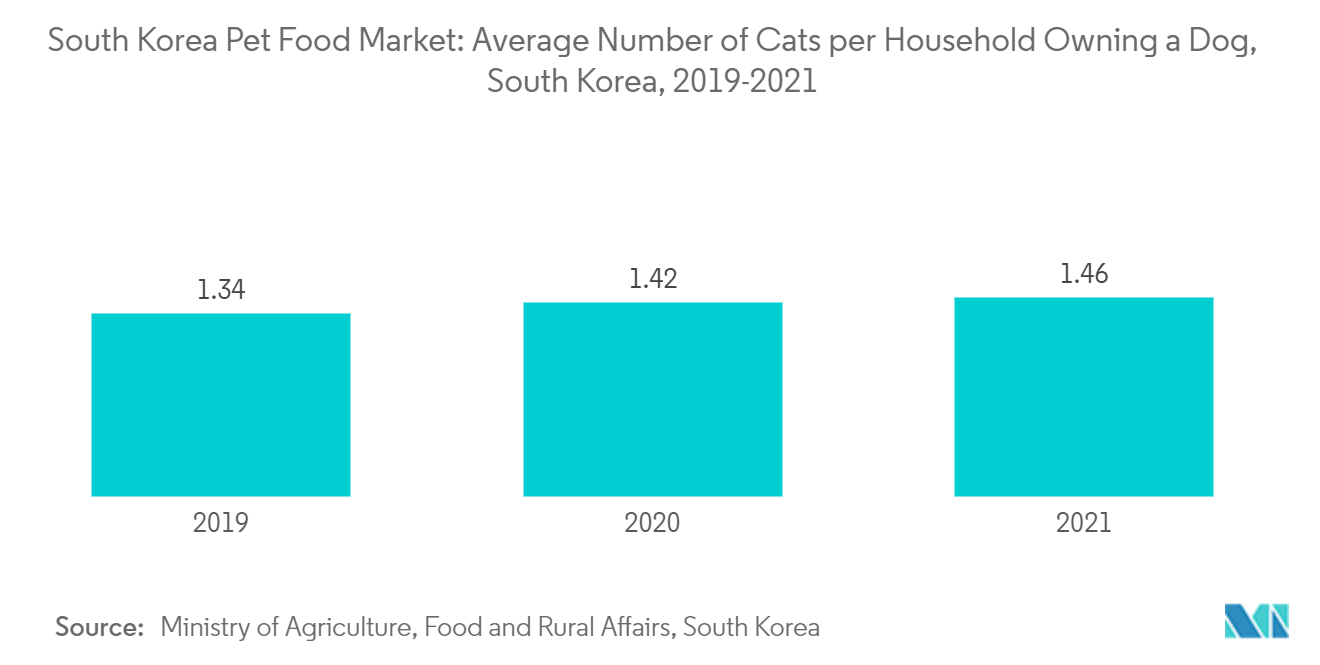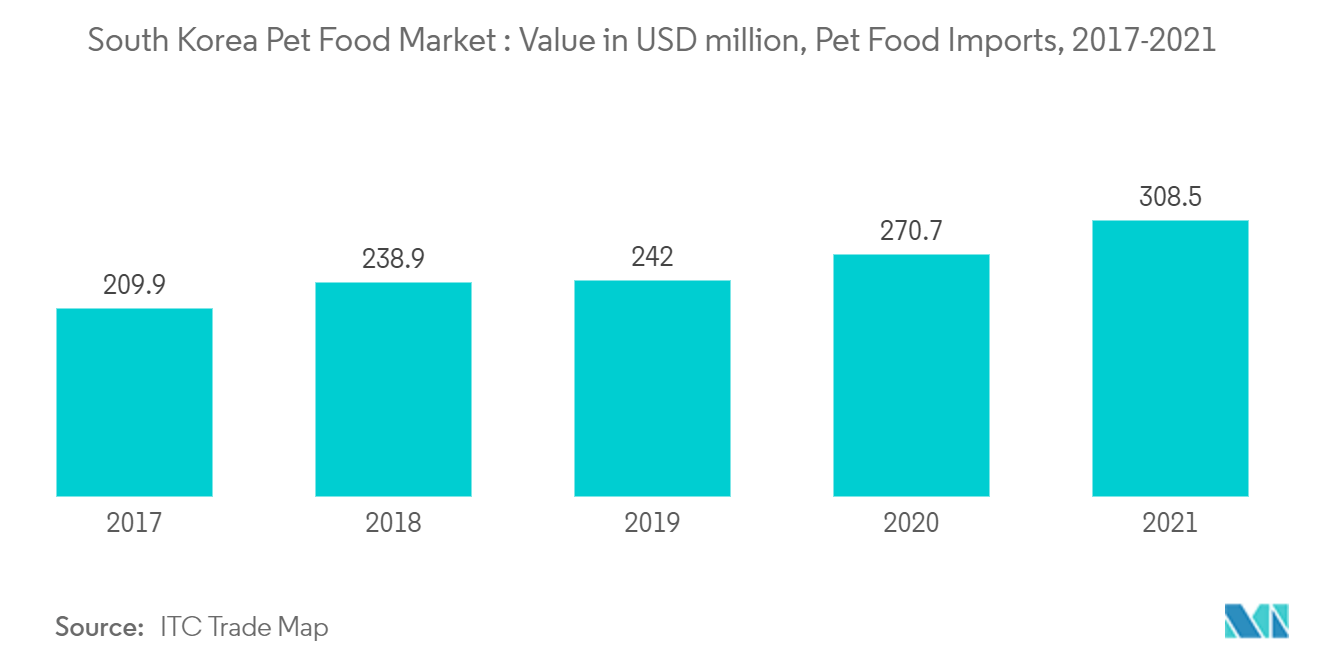Market Trends of South Korea Pet Food Industry
Increasing pet population and consumer expenditure on premium pet food
Pet humanization is becoming globally accepted in the pet industry because more pet owners are willing to provide their pets with human-like products and experiences. Rapid urbanization and changing lifestyles have brought about a renewed interest in pets, especially cats and dogs, in the country.
According to Statistics Korea, 4.54 million households own dogs, and 1.12 million own cats. One out of every four South Korean adults owns a pet. Also, the number of households owning cats and dogs is rising. According to a survey conducted by Korea Pet Food Association, dog owners spend an average of USD 232 a year on pet food and USD 156 on pet snacks. Dog and cat food account for 99 % of pet food sales in Korea.
People are increasingly paying attention to pet food and pet care, which has led to increasing pet food spending and product differentiation in the market. While low-priced pet food still dominates the market, premium pet food sales have increased significantly as more pet owners view their pets as family members. As a result, the pet treats category is booming in the country. Businesses are profiting from this trend by releasing high-end pet food and treat items created from natural, protein-rich ingredients without synthetic coloring, flavors, or preservatives. Additionally, pet food and treat development has given rise to a wide range of product offerings, such as probiotics for animals and mealworm-based goods.

Increasing Import of Pet Food
Imports are estimated to account for over 70% of the pet food market in Korea, according to a United States Department of Agriculture(USDA) report. The United States and China are the major importers to the country , the former leading by about 27 %.
Premium pet food products are the fastest-growing segment in the country. Since the majority of pet food products on the market are imported, many Korean companies have recently entered the pet food market and are launching high-quality, lower-priced products to compete with imported pet food.
In peak years, imported pet food accounted for a sizeable portion of the market share in South Korea. Pet food producers in Europe and Southern Asia are posing a growing threat to US and Chinese leadership, which currently hold the top spots by volume and value, respectively. While China dominates the snack market due to its closeness, the US, European nations, and Canada benefit from duty-free status and hold a larger part of the pet food market.
The variety and nutritional advantages are the top two reasons pet owners choose imported pet food, according to a poll by the Korea Pet Food Association. Consumers' low price sensitivity and high brand loyalty toward imported goods provide international companies more room to expand their market reach.


